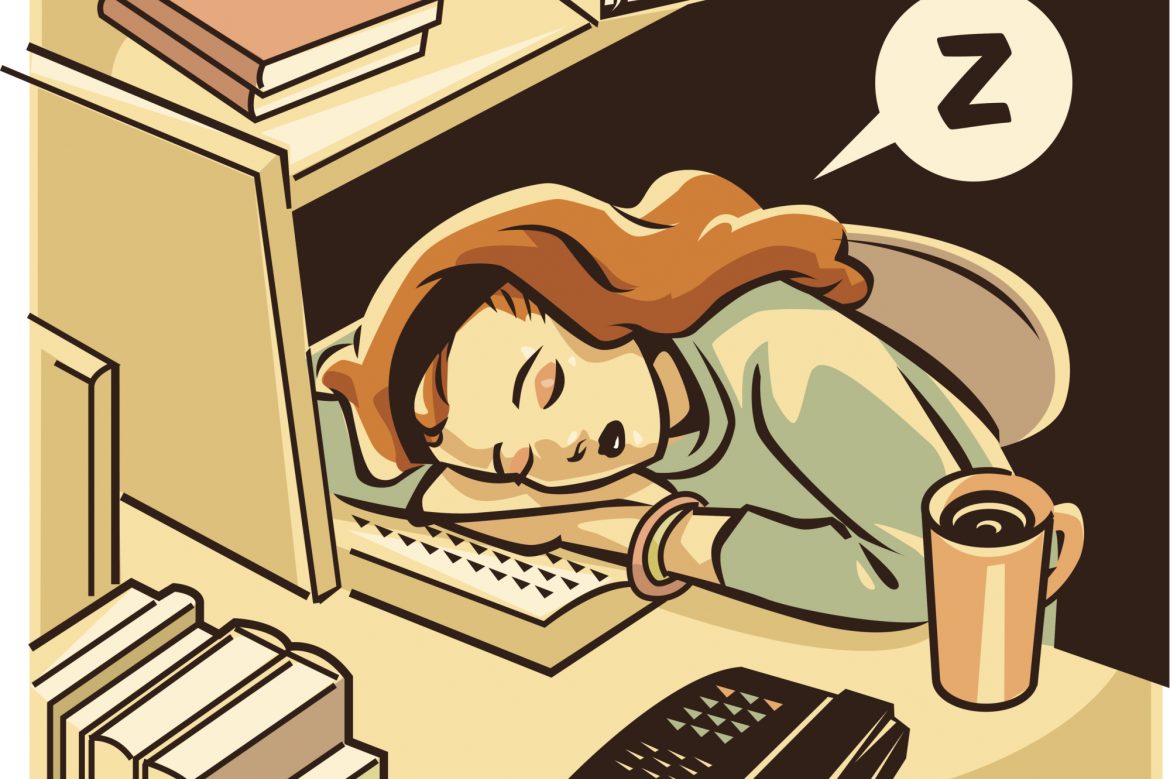If only we could shrink down to the size of a glucose molecule and pass through the blood-brain barrier, we could go on a wild melatonin-powered ride into the sleeping brain. And what an adventure would that be!
Sleep comes softly
Researchers define sleep not as a state or an unconscious “condition” of the mind, but as a process in which the brain goes through recurring states of consciousness. These states are further categorized into two main phases: REM (rapid-eye-movement sleep) and NREM (consisting of all the stages that are not REM). We have about six 90-minute long cycles per night. In addition, using electroencephalography (EEG), researchers can track the particular stage that a person is in while he/she sleeps.
We enter into “sleep mode” as the brain waves switch from the low-amplitude, high frequency pattern that is characteristic of wakefulness to a pattern of higher-amplitude and lower frequency. In NREM sleep, body functions slow down considerably.
Stage 1 (S1) is marked by drowsiness and sudden muscle jerks
In Stage 2 (S2), eye movements stop and brain waves become slower
Stage 3 (S3) is also called “slow wave sleep” (SWS) in which blood pressure falls, breathing slows and the body stops moving.
Some of the most important brain changes related to bodily recovery and learning take place during S3. Moreover, the time spent awake and the time spent in S3 are inversely related. In other words, the longer a person stays awake, the more he/she spends time in SWS. This brings to mind the idea that the brain keeps a close watch on just how much our bodies need sleep. If the body is deprived of sleep at S3, the brain compensates by making us stay longer in slow wave sleep. As such, getting enough deep sleep seems to be crucial in maintaining the body’s vitality.
D-REM-y sleep
The majority of REM sleep occurs during the last third of the night. We also have the most dreams in REM, right before we wake up in the morning.
This stage is identified by the rapid movement of the eyes (eyes move back and forth underneath the skin)
Body becomes atonic – muscles do not move but the brain remains active
Heart rate increases and breathing becomes rapid
If the body were not so atonic, we could easily hurt ourselves or others while we are dreaming. So, that is why find ourselves inside our bed in the morning even if we had a terrible nightmare, perhaps right before finals week.
Sleep is an indispensible part of our lives. We depend on it for its ability to not only clear out toxins from our system but also to consolidate what we have learned previously. Therefore, if there is one thing that you cannot compromise on with regards to physical and psycho-social wellbeing, your best bet is on sleep.
REFERENCES
- 1. Porkka-Heiskanen, T., Zitting, K.-M., & Wigren, H.-K. (2013). Sleep, its regulation and possible mechanisms of sleep disturbances. Acta Physiologica, 208, 311-328.
- 2. http://sleepdisorders.sleepfoundation.org/chapter-1-normal-sleep/stages-of-human-sleep/
- 3. http://www.biltek.tubitak.gov.tr/gelisim/psikoloji/ruyalar.htm


